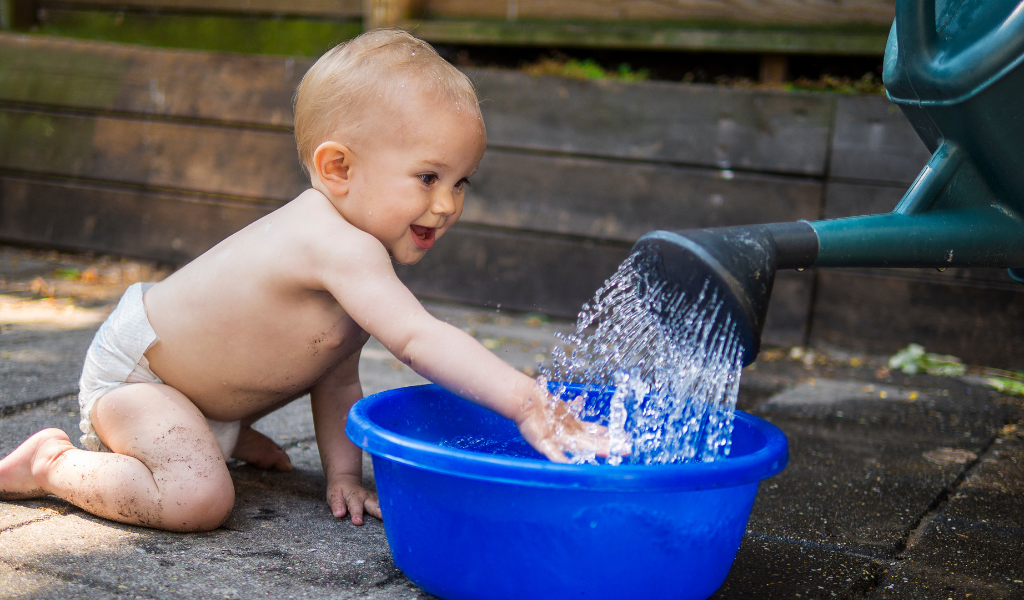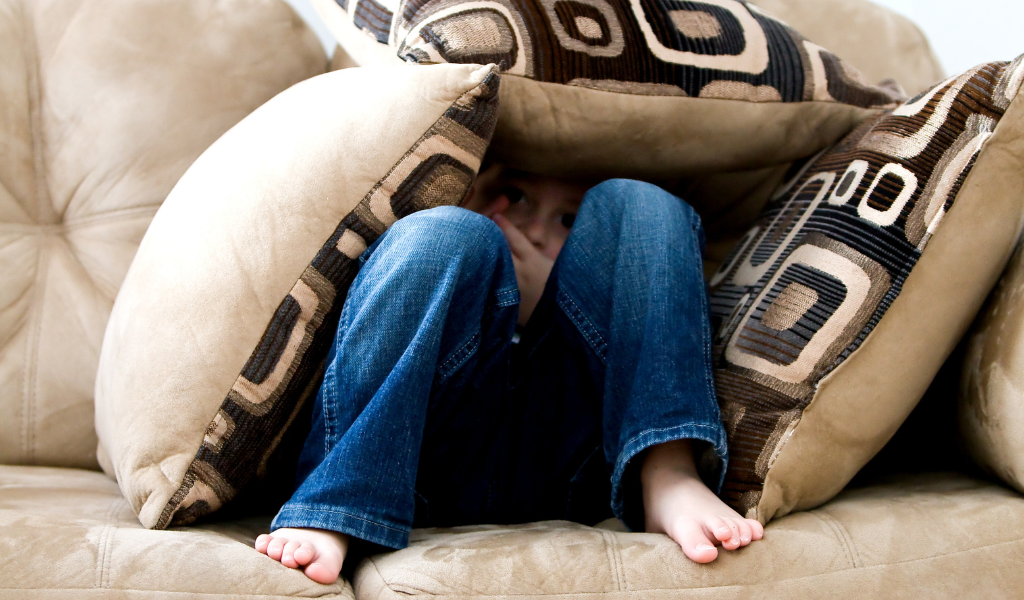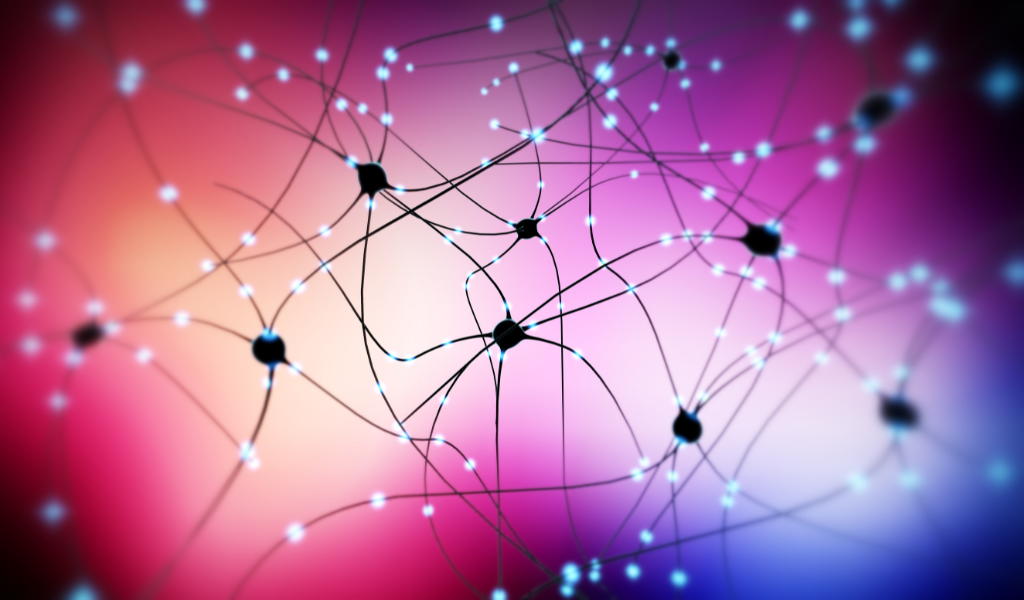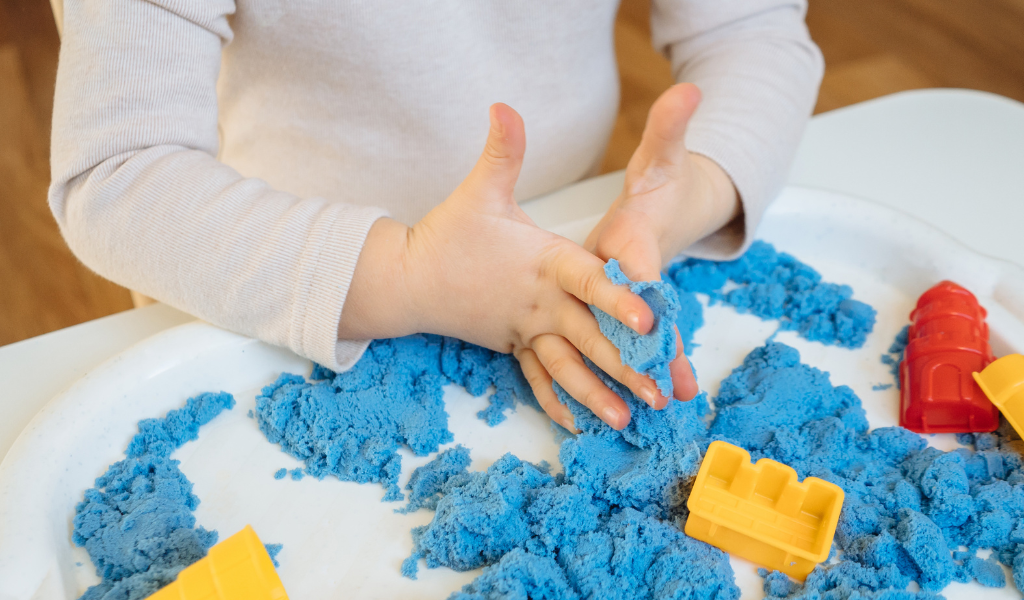What comes up for you with the words sensory play? Images of mud, water, sand and outdoor kitchens? If so, you’d be right, this is sensory play, just not in its entirety. I’d like to take a minute to share some mind-blowing information about the neuroscience behind sensory motor play, and learning and development!
With 8 sensory systems throughout the human body there’s a raft of ways we can target development and enhance play. The truth is, all play is sensory in nature; from running, jumping, squashing, crawling, lifting, watching and listening, to tasting and smelling. Whether we intentionally create ‘sensory’ experiences in an early years setting or not, the very nature of our world is sensory and we interpret and respond to this information continuously.

Each of us has our own diverse profile of processing sensory information, which I like to think of as being as unique as a fingerprint. It’s also dynamic; our thresholds of response and tolerance can change somewhat, depending on our mood and the combination of sensory experiences we’ve had, not just in that moment but also leading up to it. So the very nature of achieving a ‘perfect’ sensory environment that supports all needs in a setting is a nigh on impossible task. So why try? Why is it so important to pay attention to supporting the sensory systems?
For some children with SEND, it is an essential part of inclusion and access to an education setting. As a Consultant Children’s Physio specialising in neurology my focus is on how sensory motor play impacts the brain. It makes the difference between successful, happy access to learning opportunities and a child who is overwhelmed with stimulus, leading to emotional meltdowns and shutdowns that can be perceived as behaviours.

When we get it right, it’s like a symphony orchestra coming together, giving us the opportunity to deliver valuable moments for learning and neurodevelopment. If we approach it wrong, however, it can also be like kryptonite for diverse brains and trigger fight, flight responses. So here’s a bit of science to help you understand more.
The sensory systems take in information about our outside world (sight, sound, smell, touch and taste) and about our internal state: movement and direction, known as vestibular; body awareness or proprioception; interoception or ‘feelings’ from emotions and hunger, to pain and needing the loo.
They take this information and feed it through the nervous system to the brain who makes a decision about whether we need to respond to it or can ignore it and filter it out, this is called registration. If the information is registered and meets a certain threshold the brain elicits a response which is typically hard wired through the centres of the nervous system that control fear. This causes behavioural responses that manifest because children are overwhelmed or overstimulated by their environment.

Put simply, the sensory systems are designed to detect potential danger and keep us safe. They help control calm and chaos, are fundamental to sustaining attention and focus, and are the foundation in the Pyramid of Learning (Taylor & Trott, 1991). In my book, Equipping SEN Children for Life, I talk about how this mimics a see-saw and as educators, keeping that in balance means learning can take place. When the see-saw is balanced we call this regulation – the perfect place for developmental opportunity and play!

Because of the nature of diversity of need for SEND there’s no hard and fast rule about what to do to help keep that see-saw in balance. Instead, the most powerful tool you have in your kit is observation. Signs of dysregulation can be subtle or ragingly obvious but once you’ve established these for a child in your setting you can begin to track down the things that balance the see-saw.
The key here is that if something isn’t working, it also shouldn’t be enforced and can raise further anxiety. Without specialist assessment, this is a process of trial and error at times so being child-led is essential.
● Do they need a quiet break out space where the auditory/noise stimulus is reduced?
● Is going on a swing for some movement/vestibular input helpful?
● Perhaps more movement such as spinning, running or jumping is needed outside?
● Squeezing into a tight space, under blankets or cushions for some proprioceptive input may be needed?
● For many children, a reduction in spoken language is absolutely essential at times of dysregulation as language centres in the brain will be the first to shut down at times of stress – something that can be really hard to follow as an adult trying to calm a child!

Jo McMeechan is an award winning Consultant Children’s Physiotherapist, Author of number 1 best seller, ‘Equipping SEN Children for Life’, and SEN Advocate. She has seen and experienced the barrier to support for SEN children first hand, both as a professional and as mum to Autistic, ADHD children. She also runs a hugely successful and pioneering non-profit organisation, the SENStory CIC, that provides fun, back to nature opportunities for therapy, play and learning.
On a mission to change the narrative of Special Educational Needs, Jo is a seasoned public speaker featured on stage at national events such as EPOP Early Years Festival, Nursery World Exhibition, the global Bee Inspired event and through national charities such as the Riding for Disabled Association. Her book has supported hundreds of families and professionals to change their approach to the Special Educational Needs narrative.
For more articles and information from leading early years SEND experts, visit the Kinderly SEND Hub.